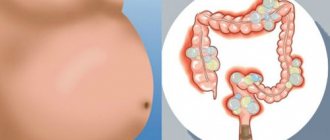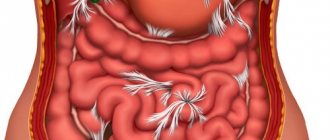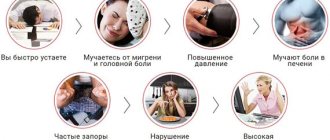Types of hyperuricemia
The nature of the occurrence determines the primary and secondary forms of the disease.
Primary hyperuricemia is idiopathic in nature, i.e. occurs for unclear, undetected reasons. It is believed that it arises as a consequence of a violation of biosynthesis at the molecular level and the breakdown of nucleids as a result of the pathology of purine metabolism (purines are vital substances found in all cells of the human body).
Secondary hyperuricemia is observed with accelerated breakdown of adenosine phosphate and occurs as a consequence of any disease. This form is often observed with hypoxia of various types, as well as with an imbalance of lactate and glucose in the blood, and also with alcohol abuse.
Secondary hyperuricemia can be the result of a tumor process in myelo- and lymphoproliferative diseases, infectious mononucleosis, pernicious anemia and other diseases with tissue proliferation through cell division.
Treatment of tumor processes can also cause secondary hyperuricemia.
A common consequence of this form is kidney failure, which occurs as a result of uric acid crystals blocking the kidney tubules.
Prevention
As many doctors say, it is better to prevent a disease than to treat it.
Therefore, regular visits to the doctor, getting tested and following the basic rules of a healthy diet will help avoid the negative consequences of hyperuricemia. There is no need to provoke the body by loading it with excess alcohol or fatty foods. An unhealthy lifestyle can be a factor that triggers the development of hyperuricemia.
Hyperuricemia: causes
Based on the provoking factors, the causes of hyperuricemia are divided into forms that lead to an increase in the level of uric acid in the blood.
One of the reasons is the excessive formation of uric acid, which results in metabolic or metabolic hyperuricemia.
If the excretion of uric acid by the kidneys is impaired, renal hyperuricemia is determined. Renal hyperuricemia can develop as a hereditary predisposition or be acquired. In both cases, the development of the disease occurs when renal function is impaired according to the filtration-tubular type.
An acquired form of hyperuricemia usually develops in older people due to the growth of scar tissue in the walls of the renal vessels, causing their narrowing - vascular sclerosis.
In addition, the causes of acquired hyperuricemia can be atherosclerosis, arterial hypertension, and diabetes mellitus. Often, long-term and sometimes unjustified use of aspirin, diuretics or other medications also leads to the development of hyperuricemia.
Hyperuricemia resulting from impaired excretion of uric acid from urine, i.e. its accumulation in the urine leads to the formation of sand and kidney stones.
When purine metabolism is disrupted, gout develops - an inflammatory disease of the joints, accompanied by their deformation and acute pain.
The causes of hyperuricemia can be diseases of the blood and lymphatic system, psoriasis, sarcoidosis and other factors that impair kidney function.
Diagnostics
The basis of diagnostic measures is a biochemical blood test. In addition, the diagnostic plan includes:
- Analysis of urine;
- detection of uric acid in blood serum;
- x-ray of the kidneys and affected joints, but only in cases where the attending physician suspects gout;
- Ultrasound of this organ and ureters.
Before taking blood and urine tests, the patient must adhere to several rules - four days before donating fluids, it is necessary to limit the consumption of proteins and completely abstain from alcoholic beverages. Eight hours before the tests, you are prohibited from eating.
The tests will be ready in a few days, after which the specialist will prescribe individual treatment tactics and the use of medications (which depends on the causes of the disease and the degree of symptoms).
Some types of hyperuricemia
Asymptomatic hyperurecemia is the process of increasing uric acid without signs of crystal formation and inflammatory arthritis. Asymptomatic hyperuricemia rarely requires medical intervention and is often referred to as gout without symptoms. With this form of hyperuricemia, there are no manifestations such as tophi, urate stones, urate nephropathy, gouty arthritis, but there is an increased level of uric acid.
Asymptomatic hyperuricemia occurs in 5% of the world's inhabitants, with consequences occurring in approximately 10-20% of them. With this type, there is no impairment of kidney function, and a decrease in the amount of uric acid does not produce any changes in the condition of the body.
Most often, the factors influencing its occurrence are arterial hypertension, obesity, and increased levels of lipids and/or lipoproteins.
Possible consequences
There are quite a lot of complications. This:
- Gout. Inflammation of peripheral joints. Hence cartilage deformations and disability. Without quality treatment.
- Pyelonephritis.
- Kidney failure.
- Nephrolithiasis. Simply put, it is the formation of stones in a paired organ of the excretory system.
Lethal complications also occur. But extremely rarely. Treatment usually arrives faster.
Hyperuricemia is a complex condition. Correction is needed as soon as possible. To avoid dangerous consequences.
Hyperuricemia and gout
Hyperuricemia is one of the factors in the development of gout, a disease of the most well-known types of arthritis. As a result of gout, there is permanent damage to the joints and kidneys. Gout and hyperuricemia are closely related because An increased level of uric acid in the blood leads to the deposition of its crystals in the periarticular tissues. Uric acid penetrates the joint fluid through the bloodstream and forms crystals that destroy and deform them.
For many years, gout was considered a hereditary disease. Approximately 20% of patients have a family predisposition.
But, based on modern research, a connection has been established between purine metabolism and the formation of urate stones. In addition, impaired purine metabolism leads to the inability of pancreatic beta cells to synthesize insulin.
Therefore, gout may be associated with urolithiasis and diabetes.
But gout does not always develop only as a result of excess uric acid production. Its occurrence can be simultaneously caused by reduced filtration of urate by the kidneys or under the influence of various third-party factors.
Signs of gout are acute inflammatory processes, redness of the skin in the affected area, swelling and pain, hyperuricemia, and unilateral joint damage.
Therefore, gout and hyperuricemia must be treated simultaneously.
Symptoms of hyperuricemia vary depending on the origin of the disease, and the main criterion is an elevated level of uric acid. Therefore, for successful treatment of hyperuricemia, it is necessary to undergo appropriate diagnostics to identify the causes and form of development of the disease.
Diet to reduce uric acid levels
One of the ways to treat the disease is to follow a diet. It is based on the complete exclusion from the diet of foods that contain high concentrations of purine. These include:
- alcoholic drinks even with low alcohol content,
- fried, stewed meat. It is strictly forbidden to eat fatty fish,
- rich broths. Doctors recommend cooking food with a second broth,
- kidneys, liver,
- smoked sausage and other smoked products are prohibited,
- legumes
In your diet you need to reduce the amount of foods that are undesirable to eat:
- radish,
- chocolate,
- cauliflower.
Meat and fish can only be eaten boiled
Limiting or completely avoiding these foods will help reduce uric acid levels in the blood. Proper nutrition will help normalize metabolism, which will certainly have a positive effect on your overall health.
To saturate your body with useful substances, you need to include dietary meat, dairy and fermented milk products, fruits and vegetables in your diet. Fasting days will be beneficial for your health. It is especially important to drink at least two liters of water per day.
Symptoms
Interestingly, the clinical picture mainly occurs in children. Adult patients experience the pathological process with virtually no symptoms. Although there are exceptions.
Signs of the disorder can be described in a small list:
- Arthralgia. Simply put, joint pain. A special case of hyperuricemia is gout. When uric acid crystallizes and deposits in cavities and other joint structures.
As a rule, small peripheral tissues are the first to be affected. For example, big toes.
As the disease progresses, large joints, such as knees, hips, and elbows, are also involved. The violation can last for years, then recurring, then dying down again.
- Muscle pain. Discomfort occurs spontaneously. The nature of the sensations resembles those during inflammatory processes. Myositis (the well-known expression “inflated” the neck or lower back well explains the essence of the phenomenon and the “unforgettable” sensations).
- Increased sensitivity to all irritants. Light, noise. Patients literally cannot withstand even the average volume of sound; this sign of hyperuricemia is especially common in children. Adults endure it even harder, since they are forced to spend most of their time in a noisy society.
- Cramps. As a rule, they are represented by the simplest hyperkinesis. For example, tics. Voluntary wave-like muscle contractions without pain are typical symptoms of hyperuricemia.
Other types of seizures are possible, but not common. Usually in 2-5% of cases of the total. And then, they occur in children. In adults, only tics are present. Why such symptoms occur is not yet known for certain.
- Liver disorders. Also the gallbladder. Deviations relate to the outflow of bile. Critical disorders are possible, including obstructive jaundice and cholecystitis. There are many options.
Interestingly, secondary liver damage is accompanied by impairment of its functions. Consequently, purines and uric acid will accumulate even more actively. Is it worth saying how this will end?
It is worth repeating that asymptomatic hyperuricemia is typical in adult patients. They don't experience any discomfort.
Symptoms appear only when the kidneys are involved in the pathological process. Possible pyelonephritis. Inflammation of the tissues of a paired organ of infectious origin.
Accordingly, specific signs:
- Pain in the lumbar region. Intense. Worse before urination. They calm down after. They do not respond to the physical activity of patients.
- False urges to visit the toilet are frequent. The so-called pollakiuria.
- Then much more menacing symptoms arise. For example, polyuria. When an unnatural amount of urine is produced. Over 2 liters. Up to 5-6. The patient experiences dehydration, hypovolemia (when the volume of circulating blood decreases).
- At advanced stages of the disorder, the opposite phenomenon occurs - oliguria. That is, insufficient amount of fluid released.
The clinical picture is complex. It is extremely difficult to say that something is wrong. Only diagnostics puts an end to the question.











